-
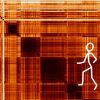 +14 +2
+14 +2New CRISPR-based map ties every human gene to its function
A new CRISPR-based map ties every human gene to its function using a tool called Perturb-seq. The work was led by Jonathan Weissman and colleagues at MIT and the Whitehead Institute, and is free for other scientists to use.
-
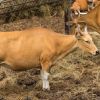 +4 +1
+4 +1How 'frozen zoos' could save vanishing animals from extinction
When Kurt Benirschke started collecting skin samples from rare and endangered animals in 1972, he didn't have a firm plan on what to do with them. As a researcher at the University of California San Diego, he believed that one day the tools would be developed to use them to save those animals. A few years later, he moved his collection to San Diego Zoo, and called it the Frozen Zoo.
-
 +25 +3
+25 +3Thousands of intestinal viruses have now been mapped. And they can be used to fight antibiotic resistance
A new method developed at the University of Copenhagen has been used to identify more than 1,000 bactericidal viruses in the human intestines. The researchers believe the discovery may help fight antibiotic resistance.
-
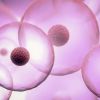 +15 +3
+15 +3We Just Got Closer to Mapping Nearly Every Single Cell Type in The Human Body
Researchers have created the most comprehensive healthy human cell atlas to date, tracking the placements of over a million cells across 33 organs in a vast joint effort.
-
 +25 +5
+25 +5A Pair of Twins Grew Up in Different Countries, Then Scientists Compared Them
Researchers have taken advantage of a rare opportunity to study identical (aka monozygotic) twins who were separated early in life, before being raised in different countries by different families – and there are some surprising results to report.
-
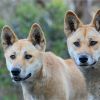 +16 +2
+16 +2From wolf to chihuahua: new research reveals where the dingo sits on the evolutionary timeline of dogs
The first high-quality Australian dingo genome gives a multi-thousand-year-old snapshot into the evolutionary history of dogs.
-
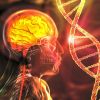 +20 +3
+20 +3Scientists discover genetic variants that speed, slow brain aging
Researchers from a USC-led consortium have discovered 15 “hot spots” in the genome that either speed up brain aging or slow it down — a finding that could provide new drug targets to resist developmental delays, Alzheimer’s disease and other degenerative brain disorders.
-
 +17 +4
+17 +4The Human Genome Is Finally Fully Sequenced
Researchers are excited by the potential it holds
-
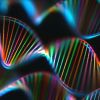 +19 +2
+19 +2A computer made from DNA-coated beads could detect viruses in saliva
A type of DNA computer that shows results through the motion of tiny beads could massively increase the parallel processing power of such machines. DNA computers take up less space than silicon-based ones and can work in wet environments. They could be used for applications such as detecting contamination in drinking water or monitoring sugar levels in the body.
-
 +17 +3
+17 +3Children born in 50 years might celebrate their 150th birthdays, say anti-aging experts
The search for immortality is the oldest tale in the world. Literally: the oldest written story known to historians is The Epic of Gilgamesh, first written down in Sumerian cuneiform on clay tablets, about 4,000 years ago in what is now Iraq. In it, King Gilgamesh seeks a plant which grants eternal life. (He finds it, but a snake steals it before he can use it.)
-
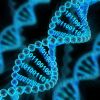 +19 +3
+19 +3Adding new letters to DNA alphabet doubles density of data storage
As with most things, nature’s data storage system, DNA, far surpasses anything we’ve created. Now, researchers at the University of Illinois Urbana-Champaign have doubled its already incredible storage capacity by adding extra letters to its “alphabet,” and developed a new way to read it back.
-
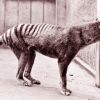 +11 +1
+11 +1Australian Scientists Plan to Resurrect the Extinct Tasmanian Tiger
The Tasmanian tiger, or thylacine, is one of Australia's most iconic species. Even though it has been extinct since 1936, the slender, striped marsupial maintains its place in Australian mythology because of a constant string of supposed sightings that has captivated the public and the media. Just last year, one group claimed to have spotted the "Tassie tiger" padding through Australia's forests. The claims were never verified.
-
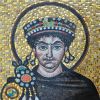 +15 +3
+15 +3We May Have Underestimated The First Known Outbreak of Bubonic Plague
The Justinianic Plague spread through west Eurasia between the 6th and 8th centuries CE, signifying the first known outbreak of bubonic plague in this part of the world. According to a new analysis of ancient texts and genetic data, its impact was much more severe than some recent studies have suggested.
-
 +30 +5
+30 +5Scientists report finding a second person ‘naturally’ cured of HIV
“This gives us hope that the human immune system is powerful enough to ... eliminate all the functional virus,” said the senior author.
-
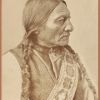 +16 +3
+16 +3Living descendant of Sitting Bull confirmed by analysis of DNA from hair
A man’s claim to be the great-grandson of legendary Native American leader Sitting Bull has been confirmed using DNA extracted from Sitting Bull’s scalp lock.
-
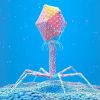 +24 +4
+24 +4Viruses are both the villains and heroes of life as we know it
Viruses have gotten a bad rap for the many illnesses and pandemics they’ve caused. But viruses are also genetic innovators – and possibly the pioneers of using DNA as the genetic blueprint of life.
-
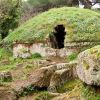 +13 +2
+13 +2DNA Has Finally Revealed The Mysterious Origins of The Ancient Etruscans
DNA evidence has finally ended the debate about where the ancient Etruscans – an ancient civilization whose remains are found in Italy – came from.
-
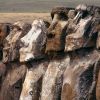 +11 +2
+11 +2DNA offers a new look at how Polynesia was settled
Modern genetic evidence suggests that statue builders on islands such as Rapa Nui, also known as Easter Island, had a shared ancestry.
-
 +9 +1
+9 +1New cause of inherited heart condition discovered
A UCL-led research team has identified a new gene as a cause of hypertrophic cardiomyopathy, an inherited heart condition affecting one in 500 people.
-
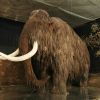 +19 +4
+19 +4This startup is going to resurrect the mammoth through CRISPR
You’ve heard of startups building computer chips, delivery drones and social networks. One called Colossal has a very different goal: bringing the woolly mammoth back from extinction by 2027 using CRISPR, a revolutionary gene editing technology. Colossal’s co-founders are Chief Executive Ben Lamm, who started five companies before this, and George Church, a Harvard Medical School professor with deep CRISPR expertise.
Submit a link
Start a discussion




















